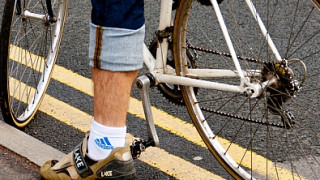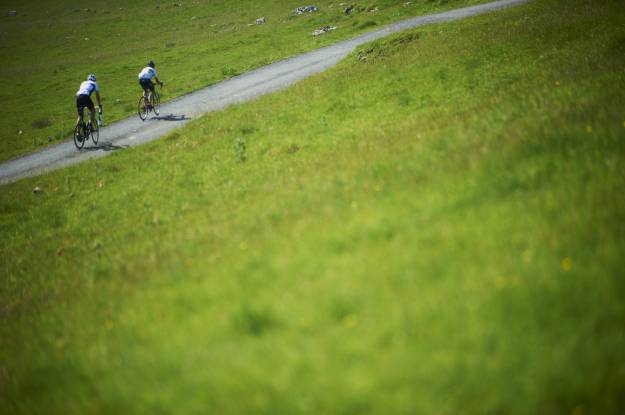Don’t let the lack of lycra stop you riding to work. Plenty of people around the world ride to work in normal, everyday clothes. And spring in the UK is a season when this approach is most achievable. We take a look at which clothes work on the bike and which don’t.
For sedate, short distance stuff, you can indeed wear anything you like. But for more briskly paced, longer commutes (3-5 miles), you can still wear clothes that'll fit in at work, or at the pub, or wherever. Just because you commute by bike doesn't mean that you're fashion choices are confined to the 'cycling specific' aisle. A judicious eye can reveal cycle friendly gear pretty much anywhere in the High Street, from fashion stores to outdoor shops. Let’s look at each item of clothing and highlight what to look for.
Tops - base layers - this is the layer that goes next to your skin. Rule number one is to avoid cotton. When you sweat in cotton, your sweat cools fast, making you feel cold and clammy. Polyester is better, but pongs even after a few hours of wear. It dries quickly, but doesn't wick too well (polyester has very low absorption qualities). You can get polyester base layers with treatments to minimise odours, but many of these use toxic metals in their production, which in planet-hugging terms, is not a good thing.
King for performance and everyday looks is ultra fine Merino wool. A good quality merino base layer will regulate your temperature, keep you warm even when wet, and will just bluntly refuse to pong, even after days of wear. You don't need to go cycling specific – some of the best ones are for general outdoor wear. Look for extra long sleeves if you're going for the long sleeved options and look for a longer back to keep your lumbar region covered when in 'bike' position. A good idea is to go for a couple of long sleeved and a couple of short - you can then layer them up and regulate your temperature in varying conditions.
Tops - Midlayers - dependant on the weather. If you don't need a jacket and you've got your base layer sorted, you can wear pretty much anything. However if you're cold a good old fashioned sweater works really well and you can layer a rain jacket over the top without ending up looking crumpled and clammy when you reach your destination. Again, wool is best, from a low-pong point of view - however, because it's not next to your skin, you don't need to go for Merino - standard ‘vanilla’ sheep will do just fine. Again, look for a longer cut on the arms and torso if you can get it.
Windproof/Waterproof - this is one area where cycling specific stuff really has the edge and it's probably not worth compromising. Cycling jackets have a unique fit, longer at the back, with longer arms, reflectives and pockets in the right place. Shop around and you can still find something cool enough to wear off the bike. However, if you know what to look for, you can find some great jackets in outdoor shops that have the required features. A good tip would be to go for something really breathable and probably a lot thinner than you'd choose for everyday wear. Even on moderate commutes, you can generate bucketloads of heat inside a jacket. Something that packs down small is also really important.
Trousers - NEWSFLASH - you can wear jeans when riding a bike! Gasps of shock and horror from 'serious' cyclists everywhere, but in cooler conditions, jeans work just fine on a bike. Shock news is that any normal pants that don't restrict your movement are fine. Perhaps the best compromise between performance and everyday-ability are lightweight travel pants in dark colours - they are light enough to wear even in the summer, dry fast and don't show the inevitable bike grime that you're likely to pick up on the way.
Undies - very important since they're next to your skin and on the front line - the interface between you and your saddle. Stretchy boxer styles with a fairly long leg work best. They don't bunch up in all the wrong places after a few minutes riding. Look for designs where the seams are out of the way of your saddle contact points. Once again Merino wool is best, but pretty hard to find and pricey to boot.
Socks - pretty much anything goes, provided they fit well and don't ride down under your feet when you're pedalling. Merino wool again is king in this department, for comfort, wicking and odour control.
Shoes - dependant on pedals - but if you're serious about keep it normal, fit flat pedals and look for a shoe with a good grip, one that gives you good pedal 'feel'. Look for something light that won't restrict the movement of your ankles when pedalling.









